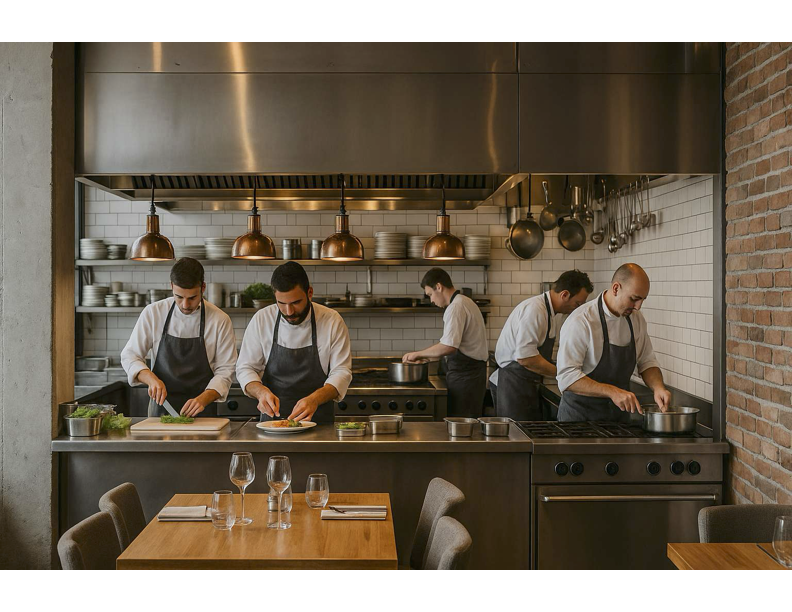The open kitchen layout has shifted from trendy to essential in many modern restaurants. What once lived behind swinging doors and frosted windows is now front and center—chefs on display, flames dancing, knives flying, and steam rising. It’s part theater, part trust exercise, and fully operational.
But behind the visual appeal, there are real reasons more commercial kitchens are going open.
Why Go Open?
1. Transparency Builds Trust
Today’s diners want to know what they’re eating and how it’s made. An open kitchen tells a story of cleanliness, quality, and pride. Customers see fresh ingredients, clean workstations, and professionals handling their food—no secrets, no shortcuts.
2. The Experience Sells Itself
The open kitchen is live entertainment. It adds energy to the dining room and elevates the experience without costing extra. Watching a chef plate a dish or torch a crème brûlée in real-time beats a wall of abstract art any day.
3. Efficiency Gets Exposed
Open kitchens naturally raise the standard for workflow. Everything from timing to teamwork improves when the operation is visible. There's less room for errors, and more incentive for chefs to stay sharp and coordinated.
Design Considerations: More Than Just Removing a Wall
Open layouts sound simple, but they require serious planning. Here’s what needs to be dialed in:
-
Ventilation is critical. The smell of sizzling garlic? Great. Lingering fishy smoke? Not so much. Airflow has to be engineered to handle the heat and keep the dining space comfortable.
-
Noise control matters. Clanging pans and shouted orders can wreck the vibe. Smart use of acoustic panels, flooring, and equipment can keep the ambiance balanced.
-
Cleanliness becomes a showpiece. Everything must be spotless—at all times. That means tighter cleaning protocols, strategic storage, and minimal clutter.
-
Workflow must be flawless. Open kitchens often have tighter footprints, which means the design must support a seamless flow between stations. Chefs shouldn’t be dancing around each other to get things done.
What Types of Restaurants Should Consider It?
-
Fine dining spots that want to highlight craftsmanship and precision.
-
Fast casual places that need to prove freshness and process.
-
Concept-driven restaurants where the kitchen is part of the brand.
Open kitchens aren’t for every operation. High-volume kitchens that run hot and messy under pressure might want to think twice. But for places where the process is part of the pitch, it’s a powerful tool.
Final Thought
An open kitchen layout isn’t just about aesthetics—it’s about alignment. When your food, team, and values are solid, putting it all on display doesn’t just work—it wows. And in a market where every detail counts, that wow factor might just be what keeps customers coming back.

